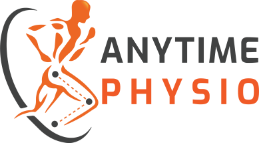Neck, Shoulder & Back Pain
A Physiotherapist's Tips to Fix Your Office Work-Related Pain
Stiff and sore from hours parked in front of your desk at work? You’re not alone. Figures suggest that up to 56% of office workers experience low back and upper back pain at any one time. And this doesn’t take into consideration those who might also be suffering with neck pain, shoulder pain and wrist pain.
Here are 5 quick tips to reduce pain in the office:
1. Adjust your workstation ergonomics
Chances are, you’ll be working at a computer or on a laptop. Have a look at the following checklist to see if you need to make any changes:
- Use a document holder that rests over the top of your keyboard
- Place your keyboard and mouse within a comfortable reach. Your elbows should be bent 90 degrees
- Relax your shoulders and sit back against the lumbar support in your chair
- Lower your seat so that your feet are flat on the ground and your knees and hips are bent at 90 degrees. If the desk is too high, place your feet on a footrest
- Keep the middle of the screen at or near eye level. If you are using a laptop, consider using an external monitor or raising the laptop so the screen is at eye level and using an external keyboard and mouse
2. Stand up more often
If you can, alternate between sitting and standing every 30 minutes. This may mean the use of a sit-to-stand workstation. Apart from pain, prolonged sitting has been shown to be linked to many serious health conditions such as heart disease, type 2 diabetes and various types of cancer.
3. Go for a short walk (The 30:30 rule)
As a general rule of thumb, for every 30 minutes you spend sitting, you should spend 30 seconds moving. This could be as simple as getting up to get a drink or standing up when you take phone calls.
4. Do some simple stretches
A few simple stretches will help to keep your muscles and joints mobile. Download the free exercise programs below.
5. Get started on a gym-based exercise program to prevent neck and shoulder pain
Results from a recent study on the effects of a strengthening program on neck pain found that a simple workplace-based strengthening program was effective in reducing neck pain in office workers who had current neck pain. Programs targeted towards strengthening of the neck and shoulder yielded superior results to those targeting general fitness.

